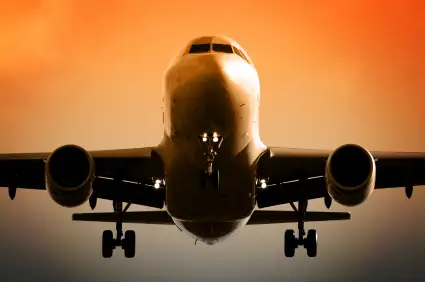
Gogo is by far the largest supplier of inflight Wi-Fi to U.S. airlines, counting among their clients American, Air Canada, AirTran, Alaska Airlines, Delta, Frontier, United, US Airways, and Virgin America. So the company has plenty of data concerning Wi-Fi use.
Its most recent parsing of its own business data shows which airports were used by the most and least flyers who, after take off, used Gogo inflight Wi-Fi on their flights. To rank the airports, Gogo calculated the percentage of flyers using their service, not the absolute numbers, which would favor busier airports.
The 10 most connected airports were as follows:
- 1. San Francisco
- 2. New York JFK
- 3. John Wayne
- 4. Los Angeles
- 5. Washington Dulles
- 6. Newark
- 7. New York LaGuardia
- 8. Chicago O’Hare
- 9. Seattle-Tacoma
- 10. San Jose
At the other end of the spectrum, the airports with the least Wi-Fi usage were:
- 1. Pensacola
- 2. Savannah/Hilton Head
- 3. Akron-Canton
- 4. Birmingham-Shuttlesworth
- 5. Buffalo Niagara
- 6. Wichita Mid-Continent
- 7. Colorado Springs
- 8. Piedmont Triad
- 9. Greater Rochester
- 10. Charleston
The disparity between the high- and low-usage airports breaks down along two axes. The first is geographic: The most connected airports, with the exception of Chicago, all serve coastal cities. The less connected airports tended to be inland.
The other noteworthy difference is in the airports’ size. The connected airports are among the nation’s busiest, serving major metro areas. The others are smaller airports in less populated areas.
The most likely common denominator among these factors is business travelers. In addition to their size and location, the connected airports also carry a higher percentage of business travelers than the other group of airports.
The correlation of inflight Wi-Fi use with business traveler is a good news-bad news indicator.
On the one hand, it all but guarantees that airlines will continue to aggressively outfit their planes with inflight connectivity, until they achieve 100 percent coverage. That’s because business travelers are the airlines’ most profitable customers, and catering to their needs will always be a priority.
On the other hand, business travelers are less price-sensitive than other categories of traveler, because many of their travel-related expenses are reimbursed by their companies. That suggests that prices for inflight Wi-Fi will probably remain on the high side.
Free in-flight Internet? Only in your dreams.
Reader Reality Check
How much are you willing to pay for inflight Internet access?
This article originally appeared on FrequentFlier.com.
We hand-pick everything we recommend and select items through testing and reviews. Some products are sent to us free of charge with no incentive to offer a favorable review. We offer our unbiased opinions and do not accept compensation to review products. All items are in stock and prices are accurate at the time of publication. If you buy something through our links, we may earn a commission.
Related
Top Fares From
Today's Top Travel Deals
Brought to you by ShermansTravel
Shop and Save with Country Inns...
Patricia Magaña
 Hotel & Lodging Deals
Hotel & Lodging Deals
$229 -- Chicago: Discounted Rates and...
Francesca Miele
 Hotel & Lodging Deals
$229+
Hotel & Lodging Deals
$229+
$188 -- Honolulu: Save on Oceanview...
Abigail Lamay
 Hotel & Lodging Deals
$188+
Hotel & Lodging Deals
$188+



